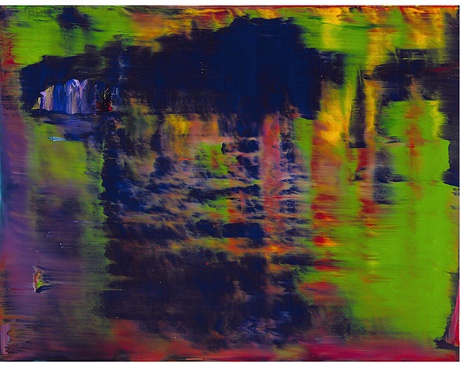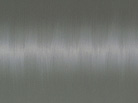‘Gerhard Richter — Review’ — unique selection which presented a cross-section of Richter’s output

‘Beside Sigmar Polke and Georg Baselitz, Gerhard Richter is currently one of the best known German artists in the world. The present project of our exhibition, showing a selection of works compiled by the artist himself, is a continuation of the IFA series which was devoted to contemporary artists. The first one was the exhibition of Joseph Beuys in 1989; the next exhibitions presented works by Felix Droese, Günther Uecker, Georg Baselitz, Sigmar Polke and Rebecca Horn.
Gerhard Richter’s selection can be treated as a retrospection in a pill: he selected 27 works which give us an insight into the stages of his artistic way, from the photo-painting of the 60s to the abstractive pictures of the 80s and 90s. Works referring to historical events are presented at the IFA exhibition, for example the cycle ‘October 18th,1997,’ devoted to the death of the imprisoned RAF members in Stammheim. Another example is Richter’s contribution to the decoration ‘Black, Red and Gold’ of 1999 at the Bundestag in Berlin.
With all these different motives, style attitudes and art historical references, however, from the final accounts it’s clear that painting in itself is Richter’s most important and only theme. Again and again he has constantly investigated its language and potential in apparently heterogeneous stages of his creation. This reflects his reluctance towards joining any style or contents in artistic activity, what resulted from his personal experiences. Gerhard Richter’s move from Dresden to Düsseldorf in 1961 wasn’t only a change of political and social environment, but also the change of artistic milieu. He changed the GDR tradition of real socialism in painting to the confrontation with late artworks of Informel and the beginnings of Pop-art. This change has brought doubts in any surety or categorical character of art classifications. Richter sees painting as an activity, a looking for the current reality.’
Ursula Zeller

‘Gerhard Richter — Review’ — works with Dieter Schwartz's commentary The presented selection of reproductions cannot aspire to cover the entire spectrum of Gerhard Richter's work, however, it does give a depiction of many...

The exhibition ‘Review’ was prepared in 2000 by Gerhard Richter and Götz Adriani for the Institut für Auslandsbeziehungen (IFA) in Stuttgart.
The exhibition showed 27 exhibits, including 9 pictures; the remaining works included a group of offsets and Ciba-chromes. It was a unique selection which presented a cross-section of Richter’s output and included all his artistic interests. The motives and themes presented at the exhibition run through all his works.
The exhibition was organised in collaboration with the Goethe Institute of Cracow.
‘An attempt of presenting as complex work as Gerhard Richter’s creation within the framework of the programme of the Institut für Auslandsbeziehungen verges on impossibility. Any presentation devoted to be shown abroad, travelling through many countries and many years, has inevitably to be submitted to certain limitations, both as far its range and its elasticity is concerned. Apart from this, the very format of the exhibition, even if only slightly retrospective, would exceed these limitations. Wasn’t it an obvious thing, before commencing such an ambitious project, to ask Gerhard Richter himself to compose such an exhibition by himself as a kind of self-portrait which could present him and his works to a foreign audience in the best possible way?
In 1997 I asked Gerhard Richter whether he would be interested in composing an exhibition for the Institut für Auslandsbeziehungen. Having thoroughly thought the offer, he accepted this adventure. A time passed since the agreement, during which he was busy with the work ‘Black, Red and Gold,’ which was a part of the plan of interior decoration for the former building of Reichstag in Berlin.
This extraordinary work of art provoked some public and political controversies, what made that the artist looked doubtfully at the possibility of accepting other ‘public’ orders. Some time had to pass before he felt ready to start working on this equally requiring project. I am deeply grateful to Gerhard Richter for enabling us to make such an expressive presentation of his output.’
Curator: Götz Adriani





